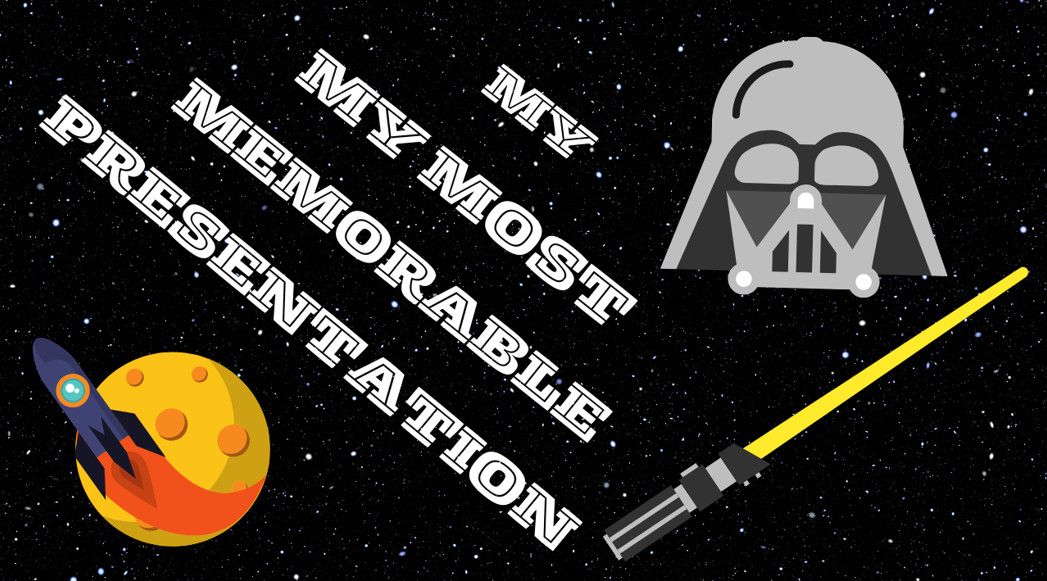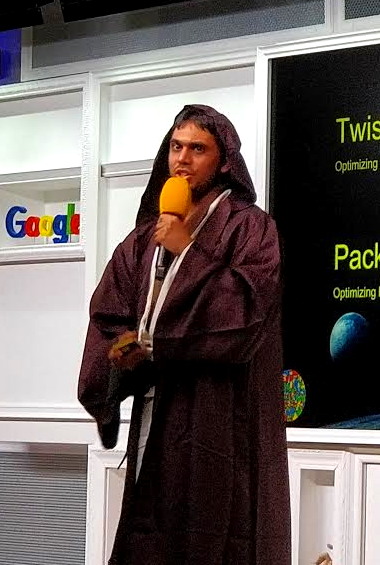My most memorable presentation
Tips for effective presentation strategies based on real life practical experience.

Tighten: This town isn't big enough for two super villains.
Megamind: Oh, You're a villain alright, just not a super one.
Tighten: Oh yeah? What's the difference?
Megamind: Presentation!
The year was 2017. It had been more than a year since I moved to Paris and joined the operations research team at Google. Since then, I was working on an optimization solver. I didn’t have enough theoretical knowledge, so I had been reading papers to get ideas to improve the solver. Also, I was the only person on this team who was working on that solver full time. Other teammates were working on some other projects as well. The solver wasn’t nearly ready to replace all the current needs of Google at that time. But it was in a decent shape. We needed more attention and users to get good benchmarks. For that, we needed to advertise our work internally.
My manager found a good opportunity for this. Each quarter, in Paris office, we had a large site level “Tech All hands” meeting. This is the meeting where all the updates related to the site were presented. People from all departments attended this meeting. A portion of this meeting was about the technical projects going on in Paris office. The operations research team had presented many times before in All hands. This time the manager decided to present the work on the solver I was working on. Since I am writing this post, you guessed it right, I was the chosen one for presenting the work. There were many senior members who had a lot more technical knowledge than me. But the manager (and those senior members) wanted to give me an opportunity. After all, I was the only one working full time on that solver.
Normally, I would not worry much about such presentations. I would just pick the topics I want to talk about, make some simple slides and prepare a speech. But this was a big meeting. Not so much for my senior teammates, who had presented their work in front of a larger audience. But for me, it was. So, I started looking for presentation tips. Found many. Most of them were about keeping the audience engaged. Let’s see some of them.
The first is about knowing the audience. Very obvious and yet, many people forget about it. Although it was “Tech” all hands, not everyone was familiar with optimization models and solving procedures. But since they are all engineers, they understood the linear algebra. The goal was to present the optimization problem. Describe how hard it is to solve and some of its applications inside Google. Then give some overview of the actual solver components we were working on. The time limit was about 4-5 minutes, so not many details can be covered anyway. I prepared the content accordingly.
The next and the most useful tip somewhat shocked me. It said that you should always prepare your speech first and then your slides. Not the other way around. The idea is that the main component of the presentation is the speech. The slides are supposed to help the speech. Before that, in all of my presentations, I had been preparing slides first. This simple reordering of tasks is very useful. Fancy slides with poor speech is far worse than simple slides and a very engaging speech. Preparing an engaging presentation is a hard task. Specially with presenting something technical in which not a lot of people are interested. If I lose them even for a single slide, they are lost for the rest of the presentation. So, I filtered out a lot of content that was hard to understand.
From there on, my focus was on practicing the speech. Slides were not much of the priority. Normally, I wouldn’t memorize the speech. But this was a very short duration presentation, so I did. I wanted to avoid finding the right words or phrases on the stage. In a longer presentation, I can afford to spend a few seconds thinking about what to say next on the stage. But not in a 4-minute presentation.
Now comes the slides. Although, not as important as the speech, I learned a few tricks to make it interesting. One of the tips was to make the slides follow some theme. The all hands was scheduled in December. The new Star Wars movie was also going to release around the same time. So, I made my slides based on Star Wars theme. Not a lot of work. Just collect some images and put them on the slides. I even decided to give the presentation in Star Wars Jedi costume. Why not? Engineers love Star Wars. I ordered one. Thinking that it would be useful for the future Halloween parties as well.
The organizers were serious about these presentations as well. This was going to be recorded (like all other all hands). They invited us to a review meeting where we gave our presentations. To keep the element of surprise, I removed the theme from my slides and replaced everything with a black background. They gave some suggestions on the topics of the presentation and I changed the presentation accordingly.
There was another rehearsal on the stage with mic and other tools (front screens for the presenter and the timer) on the day of the All hands, just before the meeting. For this one, they had collected the slides from us, so I can’t hide the theme anymore. But it was very useful. I didn’t really have a lot of stage fear because of the multiple speeches I had given during my school days. This on-stage rehearsal eliminated the remaining fear. It made us familiar with the stage, mic, timer, and other screens we could use for presenting. There was no audience apart from the organizers and the presenters. But still, spending a few minutes on the stage before the presentation helps a lot.
Finally, it was time. I changed my dress and waited for my turn covered under a cape. People arrived. The all hands started. The tech presentations started. Finally, it was my turn. The title slide was in Star Wars title fonts. It excited the audience, and I was given a warm welcome on the stage with a cheer. I paused for a second to wait for them to calm down. Thanks to the multiple rehearsals, the presentation went just as planned. The only thing I had to worry about was to maintain eye contact with the audience and keep moving (but not too much). Everything went as planned. Except a couple of moments, when my cape started getting below my shoes. Thankfully, no one noticed, and I didn’t fall.

I enjoyed it. So did the audience. The effect remained for a while after the presentation. Normally, not many people pay much attention to the tech projects part of the all hands meeting. But this time they did. One of my teammate told me this. Towards the end of the meeting, there is a section where the audience ask questions. Normally, no one asks questions on the technical projects, but this time they asked questions about future plans for my project. Turns out, my teammates and my manager were a lot happier than me after the presentation. They had a topic to talk about after the presentation. At Google, we had an internal tool to seek feedbacks about anything. I requested feedbacks from my manager and organizers about the presentation and according to them, I had checked all the elements of a good presentation. The audience feedback about my presentation were also good. My team got what we wanted.
This one presentation changed everything about how I approach presentations. After that, I never made a boring presentation. I don’t spend too much time to make themed slides and stories. Just the basic tricks like focusing on the audience and the speech is more than enough. Slides contain the key words and small phrases that are helping my speech. For important presentations, I still sometimes go for themed slides. My predoc exam (research proposal presentation) was a Harry Potter story where I try to kill the dark lord! (With my research projects embedded into the story). Who said you can’t tell stories in an exam?
My favorites
Video of the week: The courage to be disliked.
Quote of the week: There’s no difference between a pessimist who says, “Oh, it’s hopeless, so don’t bother doing anything,” and an optimist who says, “Don’t bother doing anything, it’s going to turn out fine anyway.” Either way, nothing happens. — Yvon Chouinard, from book 4 hour workweek by Tim Ferris.
